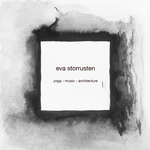Through a collaboration with local stakeholders and the organization “Reclaim Women ́s Space,” this project researched women ́s position in the Muslimcontext of Zanzibar, where there has been a more distinct gender separation traditionally. When Old Stone Town became a UNESCO-World Heritage site in 2000, the tourist industry escalated and the commercialization of space diminished the previously allocated women’s spaces. The Guardian wrote about the theme in 2018: “Spaces in which women can socialise and swap ideas may sound insignificant. But in a country in which only 16% of women have a bank account, nearly 22% are married before the age of 18 and women face many other legal, financial and institutional obstacles they are a crucial first step in allowing women to take their place economically, socially and politically.”* How can architecture and urban design principles support civil society and female empowerment in this context?
I interviewed local women and men of different ages and socio-economic backgrounds to understand how everyday life unfolds in the neighborhood of Old Stone Town. Many points could be made from meetings I have had with both individuals and groups. My main observation is that the understanding of their own position, agency and space vary a lot depending on education, socio-economic and civil status.
As a part of this project I translated the research into a room program, focusing on cultural activities for the women and the community of the neighborhood. The urban principle of differentiated public space suggests that the ground floor is open for everybody while the three upper floors provide more private spaces. The proposed pavilion has a flexible solution which allows for a varied functionality, visibility and safety. In this way, the architecture provide shielded public spaces for those women who need it, and more exposed public spaces for others.
One of the key findings for me as a Norwegian woman, is that I learnt a lot about the use of public space for women of Muslim culture. When I returned to Norway, I observed public space differently, and especially noticing how women from Muslim backgrounds were visible, or not, in public space. As I wanted to understand more, I interviewed women, and started to write articles about this theme. I think there is a lack of knowledge in how to accommodate for women, as especially women of Muslim background, which I want to contribute to creating more awareness and knowledge.
Although the architectural response is site-specific to this neighborhood, the urban principle of differentiated public space is applicable to other contexts and neighborhoods. In 2021 I contributed with this perspective into a report written for Områdeløft Grønland og Tøyen, Bydel Gamle Oslo, “Komplekse til trygge og inkluderende offentlige byrom.” The report provided references and analysis to the public space of Urtehagen in Grønland. The population in Grønland and Tøyen is multi-cultural, and has a large percentage of Muslim population, however, a very low percentage of the female population using the urban space.
The project has been awarded with the DOGA Newcomer Award and published in several publications. The Jury was impressed by the result, and enhances Eva Storrusten’s thorough understanding of the local customs and traditions: "This work shows a deep and thorough analysis of the local context, something the insightful and well-drawn project bears witness to."
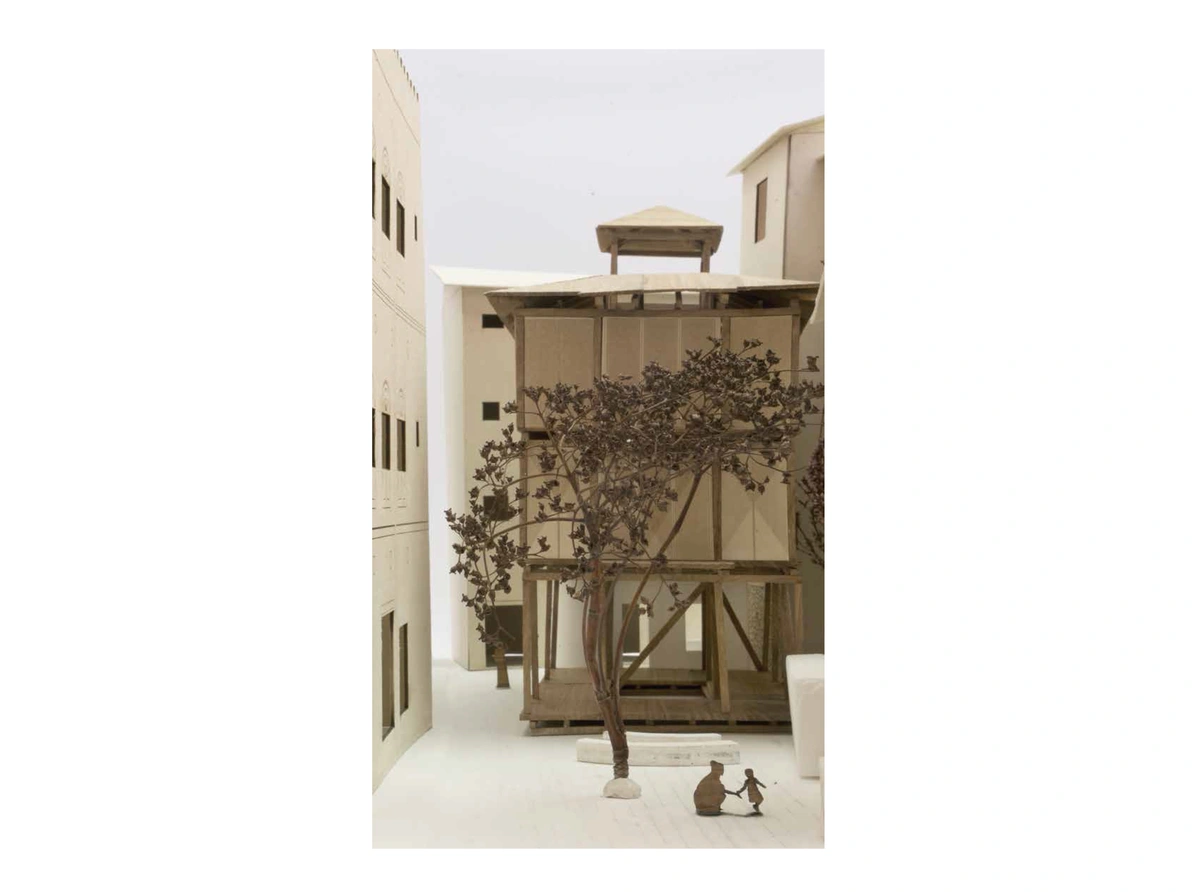
1_50 model. Seen from North / Hurumzi Street.
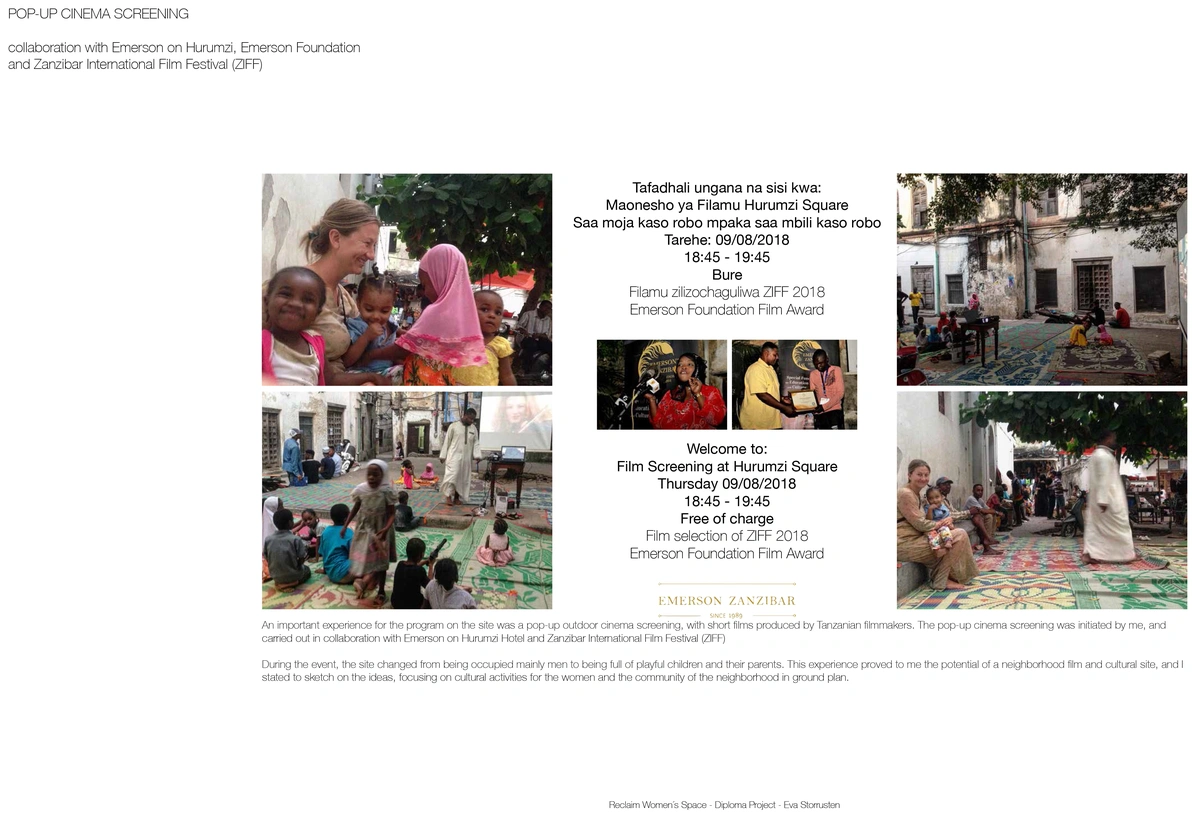
An important experience for the program on the site was a pop-up outdoor cinema screening, with short films produced by Tanzanian filmmakers. The pop-up cinema screening was initiated by me, and carried out in collaboration with Emerson on Hurumzi Hotel and Zanzibar International Film Festival. During the event, the site changed from being occupied mainly men to being full of playful children and their parents. This experience proved to me the potential of a neighborhood film and cultural site.
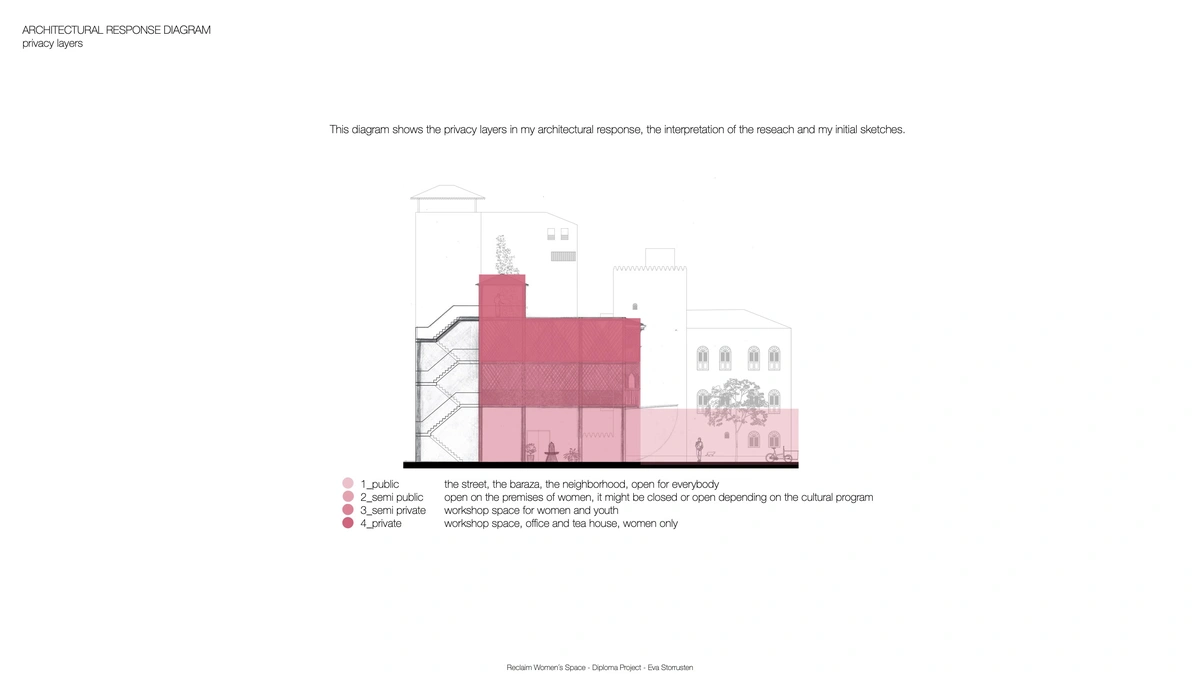
This diagram shows the privacy layers in my architectural response, the interpretation of the reseach. The shades of color refers to the urban design principle of differentiated urban spaces.
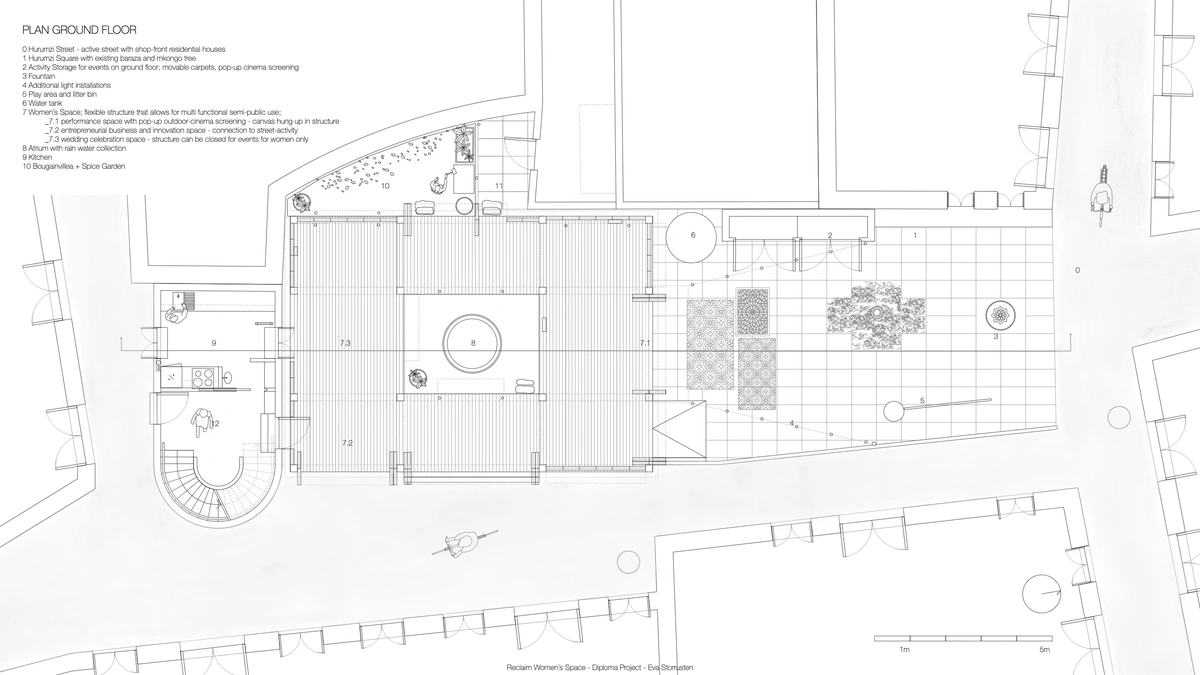
Plan Ground Floor
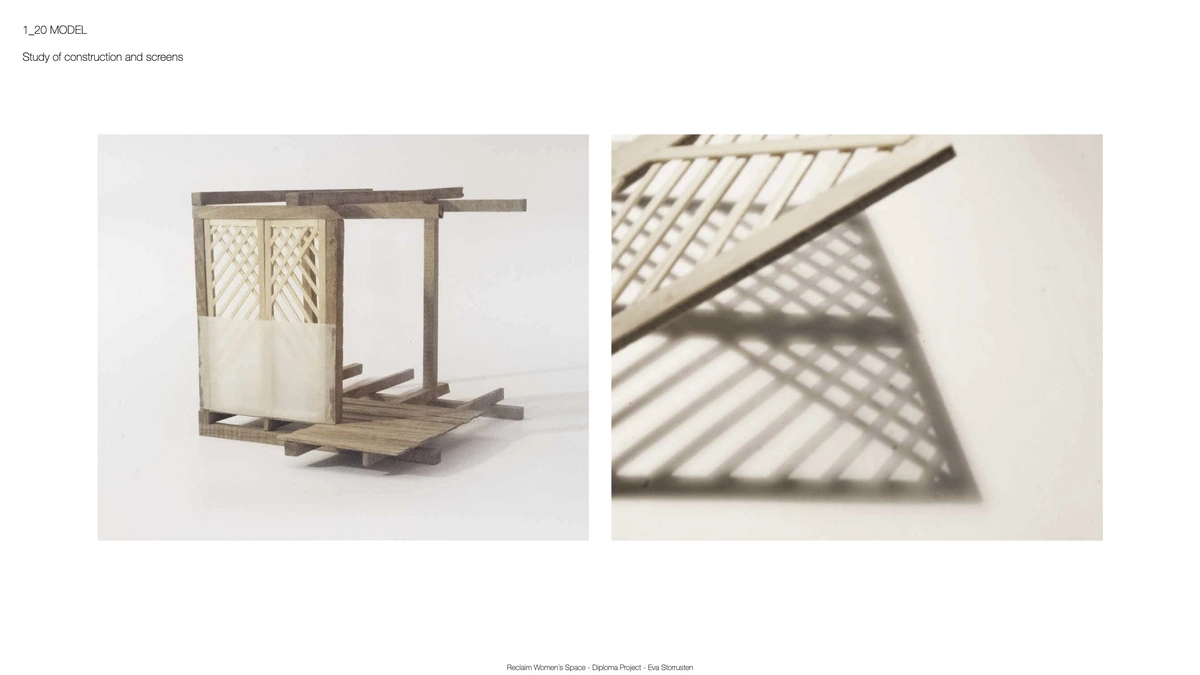
1_20 Model Study
Eva Storrusten is an architect and singer based in Oslo. She is educated at Oslo School of Architecture AHO, Manchester School of Architecture and Oslo MET. She is interested in the inter-diciplinary fields of architecture, urbanism, architectural theory, music, yoga and contemporary art. Through all of her projects, her main motivation is to find sustainable solutions to complex challenges, especially on a environmental, social and cultural level.
Eva currently works at the National Association of Norwegian Architects (NAL) in addition to freelance work. She lecured at “Urban Preservation” master course at AHO spring 2020 and has recently published articles in Arkitektur N, Altså and a report for Områdeløft Grønland and Tøyen.
This project was awarded the DOGA (Norwegian Architecture and Design) Newcomer Award. My supervisors for the project were Lisbeth Funck, Matthew Anderson and Inger Lise Syversen, Per Olav Fjeld, Anders Ese, all architects.
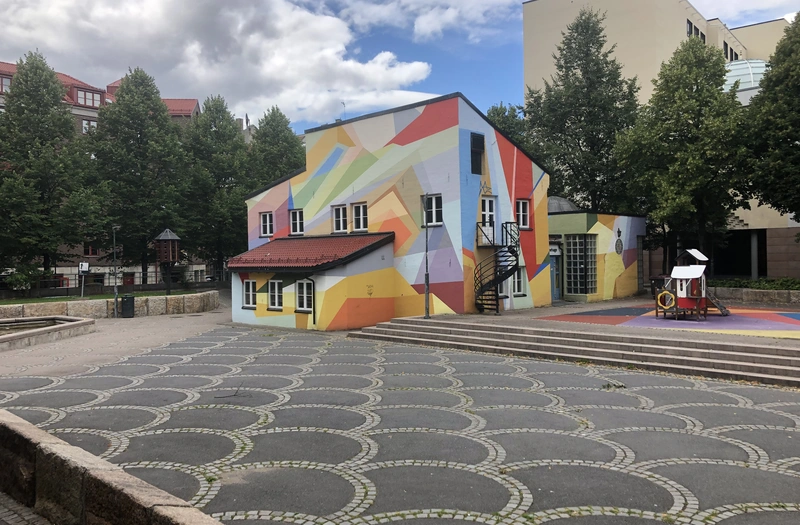
Report written for Områdeløft Grønland og Tøyen, Bydel Gamle Oslo. “Komplekse til trygge og inkluderende offentlige byrom.” The report sums up perspectives from the learning output of the master thesis and puts in into a new context. See link to report under "additional information."
